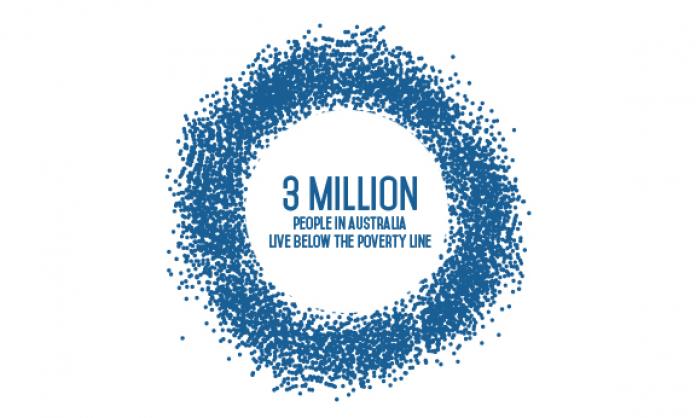We were told the wealth would “trickle down”. It didn’t. Despite 25 years of almost uninterrupted economic growth, poverty levels in Australia have barely moved. In the decade from 2004 to 2014, the number of children living in poverty increased by 2 percent.
The recently released Poverty in Australia Report 2016, by the Australian Council of Social Services, in collaboration with the Social Policy Research Centre at UNSW, sets it out in stark detail. With the poverty line defined as 50 percent of median income – $426 a week for a single adult or $895 a week for a couple with two children – almost three million Australians are living in poverty.
The headline rate, 13.3 percent of the population, is bad enough. It places Australia 14th out of 36 OECD countries. We’re up there with the US (17.5 percent), a country not known for its generous social safety net, and far behind countries such as Denmark and Iceland (around 5 percent).
But it’s in the finer details that the real shame lies, such as the 731,300 children under the age of 15 who, according to the report, were living below the poverty line in 2014. That’s 17.4 percent of all Australian children. They’re growing up in families whose weekly income is, in many cases, barely more than what our politicians claim from the taxpayer for one night’s accommodation in Canberra during sittings of parliament ($273).
Not surprisingly, single parent families, overwhelmingly single mothers, fare worst. More than 40 percent of children in these families live in poverty, compared with 12.5 percent of children in two parent families. And it’s getting worse. The report found that, since 2012, the poverty rate for children in single parent families has risen by 4 percent.
A large part of the blame for this lies with the Labor Party. In 2013, when Julia Gillard was prime minster, it changed the rules to force single parents off parenting payments and onto Newstart once their youngest child turns eight – leaving them between $60 and $100 worse off per week.
The report found that the paltry level of welfare payments is chief among the causes of poverty. Among those living below the poverty line, 57 percent rely on welfare. This includes the unemployed, disabled, pensioners and young people. When you consider that Newstart and Youth Allowance are, respectively, $110 and $158 below the poverty line, this isn’t surprising.
But it’s not just those on welfare who are suffering. Thirty-two percent of those in poverty are employed – Australia’s “working poor”.
The report identifies the high cost of housing as another key contributor to poverty. Unsurprisingly, the majority of those below the poverty line, 59.7 percent, are renters. These are people who have little hope of ever breaking into a housing market increasingly dominated by wealthy investors.
Poverty is often presented as a complex problem that can be addressed only over the long term. That’s rubbish. The problem isn’t that governments don’t know what to do. As the report notes, a significant increase in welfare payments would be a good place to start.
We’re told there isn’t enough money. More rubbish. There’s enough money for endless tax breaks for the rich. Why not, for example, recoup some of the estimated $5.4 billion in tax that researchers at the University of Technology Sydney found had been avoided through “creative accounting” by 76 multinational companies operating in Australia?
The problem is that the political and corporate elite are more concerned with boosting profits than giving a “fair go” to those at the bottom of the economic pile. That’s why both Labor and Liberal have been more than happy to slash welfare one day, and give another handout to their business mates the next.









